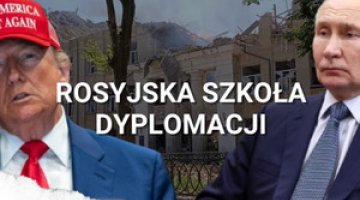Ukrainian metallurgy: the economic link in the oligarchic power system
Key Points
1. The metallurgic sector, like the east-west transit of energy raw materials, is a strategic source of revenue for Ukraine. Over the last ten years, this sector has become Kiev's most important source of foreign currency inflows, accounting for over 40 per cent of its total export revenues. The growth of metallurgic production, which has continued almost without interruption since the mid-1990s, has contributed considerably to the increase in GDP which Ukraine showed in 2000, for the first time in its independent history.
2. The sector's economic results improved over recent years in spite of the crisis affecting the machine building industry (including the armaments industry), the traditional buyer of metallurgic goods. The success of Ukraine's metallurgy sector resulted from the relatively favourable overseas economic situation in the late-1990s and the dynamic growth of exports. An important role was also played by the authorities' policy of granting the metallurgic industry a series of tax rebates in 1999 as part of the so-called economic experiment in the sector. Facing both the decline in the world economic situation and the Ukrainian metallurgy sector's dependence on foreign markets, the authorities in Kiev have chosen to continue their original policy of favouring this sector. The importance of metallurgic exports for Ukraine could be compared to the importance of energy raw material exports for Russia.
3. As this sector of industry is so attractive, owing to its immense export revenues, it has quickly found itself in the hands of new owners, who have usually been affiliated to the enterprises' original managers. Over recent years, local industrial-financial groups (IFGs) have been playing an increasingly important role. The IFGs include such organisations as Industrialnyi Soyuz Donbassa, Metallurhiya or Interpipe, within which the consolidation of the sector's enterprises is taking place. The evolution of the IFGs has followed the model of their Russian counterparts' development, in trying to form conglomerates of establishments with complete, closed production cycles.
4. Even though the presence of Russian investors in local ferrous metallurgy is relatively small, Russia plays a very important role in this sector of Ukraine's economy. It remains an important market for the local metallurgic industry and its key co-operator. As the production volumes of Ukrainian metallurgy grow, the demand for (and consequently the dependence on) Russian raw materials grows as well. The Ukrainian IFGs doing business in this sector often have no choice but to co-operate with their more potent Russian counterparts.
5. The Ukrainian IFGs, who are now the main investors in the market, are restructuring the enterprises that they control - but too slowly, thus failing to meet the entire sector's needs. Also, this restructuring first and foremost consists in investments in those undertakings which export their products. Meanwhile, degradation of production potential is progressing in line with technological obsoleteness, and the gap between the sector and its foreign competitors is widening. Consequently, the industry calls for enormous investments. The transformation model implemented so far, and the conservative policy of the state, seem to form a strategy of half-measures, which impedes deeper reforms and blocks the influx of foreign investments.
6. Each major IFG has its own political backup in the authorities at regional or national level, depending on the scale of its investments. In recent years, the symbiosis of the political and business portions of the IFGs has brought about rises and falls of particular business empires, as their respective political patrons ascended to power and then lost it. Metallurgy being the basic source of economic and political influence in Ukraine, the model of development that the sector has been implementing so far has contributed to the maintenance of the oligarchic political and economic system in Ukraine.





